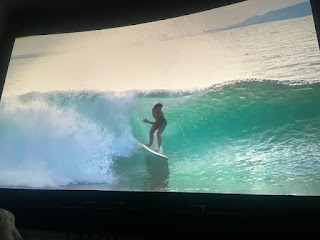There are lots of reasons I haven't blogged for a while. There's so much nonsense flooding social media, I'd like to not add to it. But there are also terrible things happening that are begging for push back. But if I blog about them, I want to offer a different perspective than what everyone else is saying, and I haven't been very confident I could.
But also, we've returned to Anchorage. Aside from finding Anchorage strangely snow free in early/mid March, there was also a spruce leaning on another tree in the back yard. (There had been strong winds while we were gone.) I did get a couple of bike rides in on snow free sidewalks/biketrails.
.jpeg)
We've got a tree cutting proposal, but they said the current priority is getting down Christmas lights that are still up. I think the tree is firmly lodged into the other tree. Someone - the phone people? electric people? - cut off the top of the tree which must have looked threatening to the wires along the alley in back.
But then, finally, the snow came.
We've been sorting through mail, and just catching up. I brought the rose bushes in from the garage. They've already started leafing out. Brought the begonia basket in too. They began to poke out of the soil in a few days.

Our internet has been on and off, more off than on. This morning it was off again but while I was calling Alaska Communications (ACS), I noticed there was a truck up in the alley and a guy on a cherry picker working near the pole. The ACS tech guy on the phone said they had decided there was a short and the guy at the pole was splicing something. It still didn't work when he left.
I went off to school. The particular kid I'm focused on was out for the third day this week. He was there Tuesday and it was nice to see each other after our long break. Our regular routine is:
Steve: "Good morning, A... how are you today?"
He's supposed to, and generally does, answer, "I'm fine thank you. And you?" The daily repetition is intended to get him comfortable speaking in English and it's been working. But Tuesday he had trouble answering. I finally figured it out. It wasn't that he'd forgotten while I was gone. It was just that he wasn't 'fine, thank you' and he didn't know how to say, 'I'm not feeling well.'
And he hasn't been there since Tuesday. But that gives me a chance to help out other kids in the class. I discovered today that two kids couldn't tell me what 2X8 equals off the top of their heads. Working on ways to help them learn the multiplication of basic numbers from one to ten.

Part of me doesn't really want to bring any unwanted attention to this addition. This had to have been arranged before Trump's White Nationalist staffers began their crusade to erase non-white, non-males from our history. The fact that they are taking images of, and stories about, people like these down at the national level shows that the rhetoric about efficiency and cutting the budget are just smokescreen for getting rid of anything that challenges their white male image of the United States. It costs more to find and delete these images than to leave them up. And what kind of person feels compelled to erase images of people who aren't white or aren't male? In my eyes it shows how scared they are to allow anything that suggests anyone else has played a role in making this nation great. But it's clear that it is white males who are trying to destroy the greatness of the United States. (Wow. I'm just writing this to explain the pictures, but what a good segue into the next picture.)

Went with a friend to GCI (the other phone/internet company in town) the other day where there was a protest against Rep. Nick Begich for speaking to a private group, closed to the public, because he won't speak to his constituents at a public meeting. Even though the original sponsoring organizations pulled out - the reasons weren't made clear - there were still about 40 folks out with signs about various issues they'd like to discuss - from Ukraine, to fired federal workers, vets, and the looming wipe outs at Social Security, Medicaid, and the Department of Education.

We also got to watch the state high school championship game between the girls' teams from
Fort Yukon and
Shaktoovik last Saturday at the sports center at UAA. (It disturbs me that the state underfunds the university and other state organizations so that they have to beg private companies to pay for such things and then plaster the name of the company on the buildings. I realize most USians probably don't remember when stadiums were not covered with corporate advertising and companies didn't buy naming rights to buildings all over campus, but I do. Until the 1970s or so, we weren't confronted with corporate branding everywhere we went. They did name buildings for individual donors* back then, but not for corporate donors. But then that gets back to issues like cutting taxes continuously for the wealthy and for corporations since the 1950s so that governments have less money and the public has to go to wealthy individuals and corporations to beg for money for public facilities. So that's why I'm only calling the building 'sports center.')

.
Fort Yukon won in a great game. Lots of passing and setting up shots. Though the three point rule tempts people to shoot when they probably shouldn't.
State Infectious Virus Reports
While my regular posts have been slow in coming lately, I have been posting updates based on the (now) weekly updates to the State's Infections Virus Snapshots. Those don't show up here among the regular posts, but can be found at the tab up top (under the orange header) titled:
Respiratory Virus Cases October 2023 Below the introduction are weekly updates (well, not quite. . . there was a period when they were updating them monthly) with new charts and the numbers for each type of virus. The State's chart is interactive, but each new chart has updated numbers, the original numbers disappear. So I capture the the originals and the updates so you can see if and how much the numbers changed from when first put up to a week or two later. When they were doing it monthly, I could only compare the original and updated numbers for the last week of the month because it was the only weekly set of numbers shown twice. This is getting way too complicated. If you have questions leave a comment.
The charts look like the one below and I add some commentary each week.
You can also go to the
state site to see the interactivity of this chart.
When I got back from the school today, the internet still wasn't working, and again I called ACS, and again, as I was talking I saw an ACS truck in front of the house. And 20 minutes after the truck left, I could get email and start writing this post.
*Individual donors. Even then, there were tremendous protests that UCLA named the new basketball arena after a wealthy oilman and donor, Edwin Pauley, and not for Coach Johnny Wooden who put UCLA basketball on the map with a string of undefeated seasons and national championships. Before that, UCLA was scrambling for a court for the basketball team. They played in the Sports Arena near the Coliseum (next door to the campus of rival USC) when they could get it. Sometimes at the Santa Monica Civic Auditorium, and even the Venice High School gym.

.jpeg)





















This was originally told by the chief in the 60s show "FTroop". But it was "Hekawee' then.